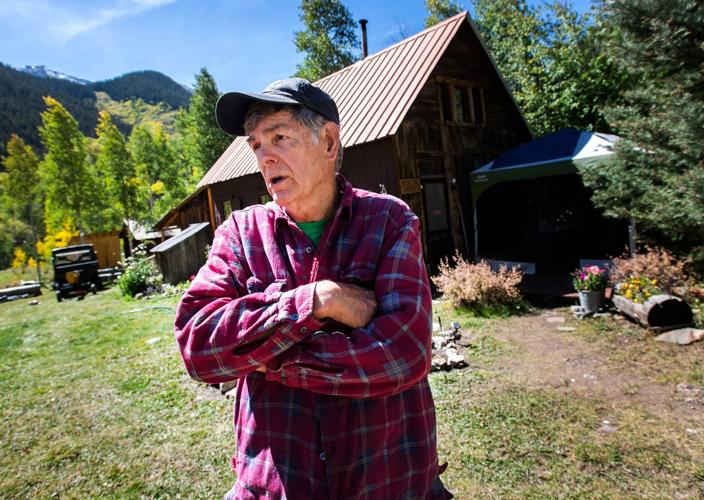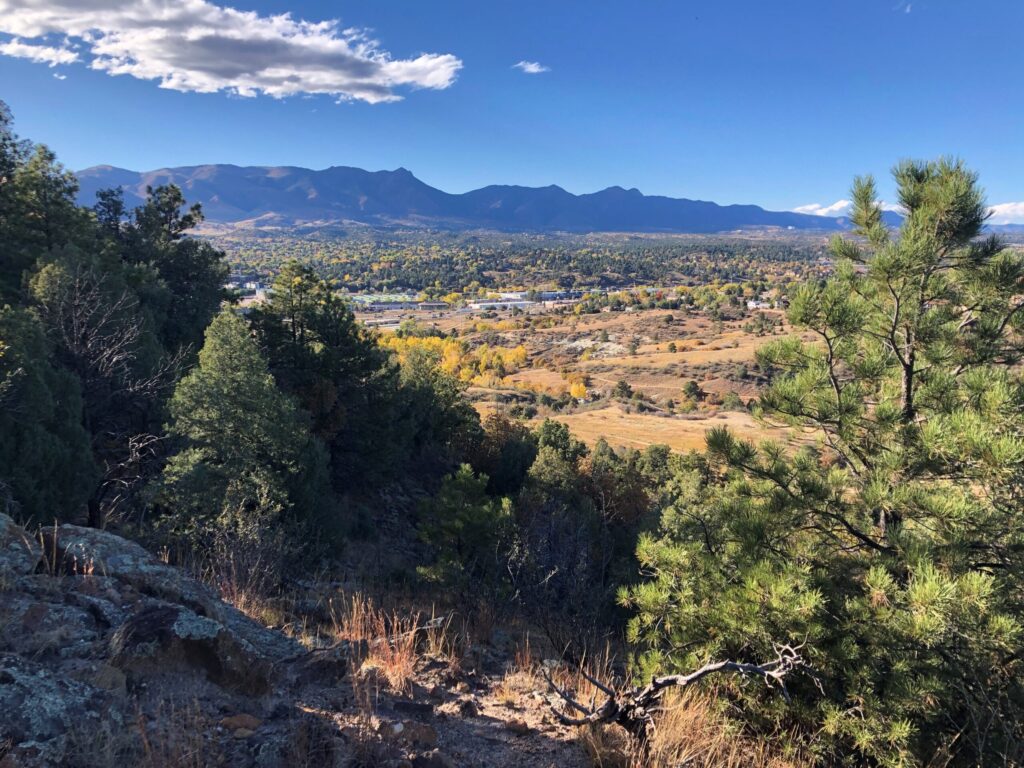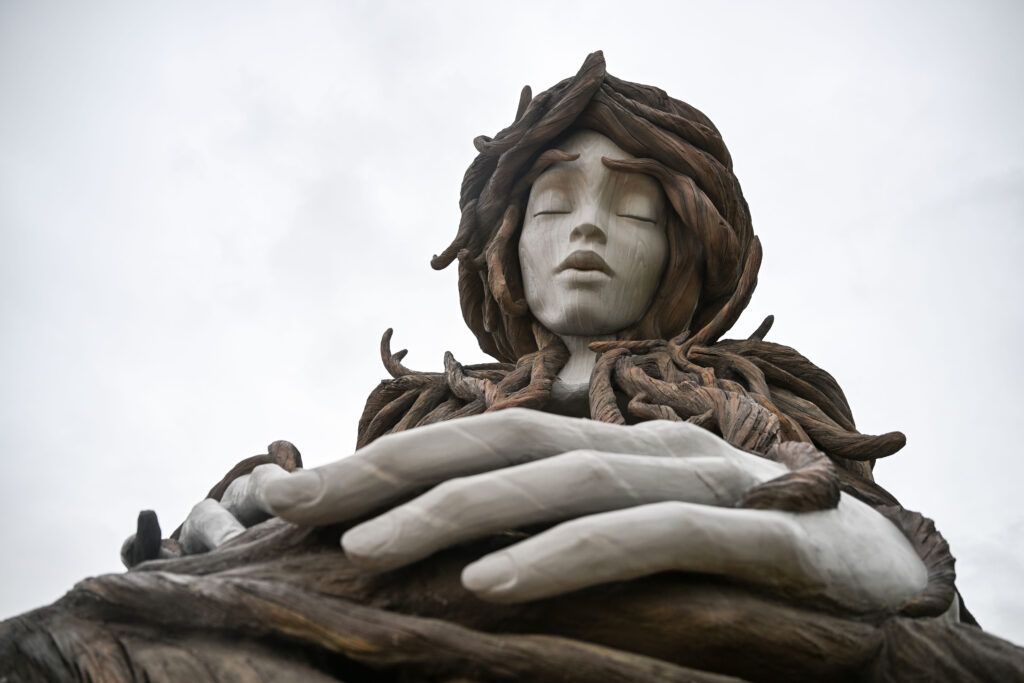A look at 8 ghost towns in Colorado
They are abandoned but not forgotten. They are the forefronts of classic Colorado images, destination reminders of the bold pioneers that built this state.
One might say their spirits linger across the mountains — their shouts and cries still heard in the night between cabins and corners of revelry and tragedy.
There might be no better time than Halloween to reflect on our ghost towns. Here’s a look at some:
Animas Forks
Thanks to the silver frenzy, this town above 11,500 feet saw a fast rise in the 1870s. One cabin reportedly gave way to 30, along with a general store, saloon, post office and a newspaper that could chronicle such blizzards as the weeks-long one that forced residents to dig snow tunnels to get around.
A write-up in 1875 aptly described the emerging town above Silverton: “From Eureka up to the Forks of the Animas, we have only one trail, and not a very good one at that.” A toll road was being built, leading to another paper predicting Animas Forks would be “the leading town of the San Juan mines.”
It was never meant to be. Today, Alpine Loop tourists are treated with a well-preserved photo op.

The ghost town of Capitol City is surrounded by the turning aspens on Engineer Pass in this Sept. 28, 2021, photo.
Capitol City
The name recalls long-gone ambitions. Upon its founding in 1877, a year after Colorado gained statehood, George Lee declared his settlement Capitol City for his hopes to sit here as governor. Those were hopes higher than the surrounding San Juan Mountains.
The remoteness had something to do with Capitol City’s eventual downfall. Still, Lee’s smelter, sawmill and broader vision — not to mention the area’s rich silver mines — attracted 800 hearty residents at one time. Lee started with his brick home and oversaw development indeed fit for a capital city at the time: a post office, school, hotels, restaurants and saloons.
Today along the scenic Alpine Loop beyond Lake City, all drivers see is the post office and “Lee’s smelter stack.” Aspen trees have overtaken the town site.

Fall begins to take hold of the aspens surrounding the Crystal Mill, outside Marble, Colo., Tuesday, Sept. 19, 2017. The powerhouse was built in 1892 and operated until the closure of the Sheep Mountain Mine in 1917. (The Gazette, Christian Murdock)
Crystal
The Crystal Mill is postcard Colorado: a 130-year-old wooden powerhouse atop emerald waters, backdropped by mountains and forest. Less visited is the ghost town farther up the rough road from Marble.
In recent years in Crystal, one has been surprised to find a lone resident of a cabin selling books about the place his family first came to in the 1940s. Roger Neal’s history book recounts the town’s mining rise and construction: a town hall, a schoolhouse, a post office, a livery, a shop for a barber, blacksmith and attorney.
Another book by Neal, “Creepy Crystal Tales,” tells of man-eating trees, a menacing beast in the woods, a cursed graveyard and a mine shaft murder.

State Sen. Rhonda Fields walks through the Dearfield Lodge/Jackson House as she and fellow members of the Colorado General Assembly join Weld County officials on an historic tour of the Dearfield townsite located about 24 miles miles east of Greeley on July 21, 2021, in Weld County.
Dearfield
The plains of northern Colorado keep remnants of a settlement believed to be unlike any other as Colorado grew as a state. At its height in the early 1900s, Dearfield was home to about 300 Black lives who thrived amid hate.
“African American men, women and children saw an opportunity, and they made it work,” Daphne Rice-Allen, of Denver’s Black American West Museum, said in a previous Gazette interview. “And the reason they made it work was because of the myth that we didn’t have the skill.”
Farmers and merchants proved doubters wrong before the Dust Bowl and world wars closed the chapter here. The old dirt roads still run between remains of an old general store, lunch room, dance hall and mechanic shop.

Vacant homes line the hill below Highway 24 north of Red Cliff Tuesday, Dec. 5, 2017, where the mining town of Gilman once stood. The New Jersey Zinc. Co. operated the town from 1912 to 1977. In 1986, Gilman was declared a Superfund site. (The Gazette, Christian Murdock)
Gilman
It’s easily missed by drivers zipping along U.S. 24 between Leadville and Interstate 70. Once spotted, it’s hard not to pull over for a better look at the town clinging to a cliffside. Company offices, houses, the school yard, hospital and clubhouse reflect Gilman’s glory days as a top producer of zinc.
The ghost town has been gated off for the toxic waste left behind from the company rule between 1912-1977. In more recent years, trespassers have posted photos online depicting something like Chernobyl: left-behind documents, tools and even furniture and appliances.

A cow grazes next to a double outhouse in the small town of Independence at the top of the hill along the Vindicator Valley Trail. The Vindicator Valley Trail is an interpretive trail that takes you past many 1890s gold mines with beautiful views and flowers along the way. The trail loops and is about 2.1 miles. (Photo by Jerilee Bennett, The Gazette)
Independence
You might’ve heard about the ghost town of the same name close to Aspen. By Victor — appearing almost like a ghost town itself more than a century removed from the Pikes Peak gold rush — this is a lesser-known site marked by the once-mighty mill and mine owned by Winfield Scott Stratton. Many foundations and still-standing structures can be viewed from the Vindicator Valley Trail.
The site is also marked by tragedy. In 1904, amid rising labor tensions, a bomb exploded at the train depot. Thirteen men died.
Local poet Maxine Phillips Brown wrote of the “sad and sweet” song of invisible locomotives heard today: “I hear them in the midnight wind, the ghostly engineers, signaling each other, from the lost and golden years.”

Fall colors pop behind the old buildings of the ghost town of St. Elmo on Tuesday, Sept. 27, 2022. (The Gazette, Parker Seibold)
St. Elmo
However brief its life, St. Elmo has enjoyed quite the afterlife. It is considered one of the West’s best-kept ghost towns, an itinerary stop for Chaffee County visitors, who feed the chipmunks. Other than the folks running the general store in the summer, the critters are the only inhabitants now.
Thousands flock to the place where a couple of thousand were said to once live, drawn by the 1870s silver bonanza. In a matter of months, the town had multiple sawmills, hotels, restaurants, saloons, stores and spoils to almost compete with nearby Leadville. From train troubles, to fires, to the silver crash, a series of unfortunate events doomed St. Elmo.

Deb Lathrop looks out over the Uptop ghost town from the porch of “headquarters” last week. Firefighters saved Uptop’s historic structures, except for a barn that the Lathrop sisters say was their favorite building.
Uptop
Crews were successful in saving this place from the massive 2018 Spring Creek fire. It was a priority, La Veta’s fire chief at the time told The Gazette.
“For that first week (of the fire), until I knew that that place was gonna be able to stand, I was up there pretty much every night,” he said. “That was definitely one place where I could step out of the truck and take a breath and just enjoy a quick moment.”
So it was in 2001 for two sisters, who bought the land and moved into a house up a dirt road off La Veta Pass. While welcoming drivers, cyclists and cross-country skiers, the sisters went about preserving several buildings, including the old train depot and dance hall.
Thus Uptop had new life since starting in the 1870s as a hub for the Denver and Rio Grand Railroad. Back then, the train tracks here were considered the highest in the world.


























